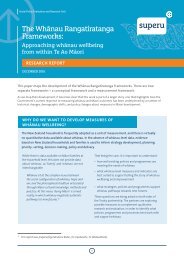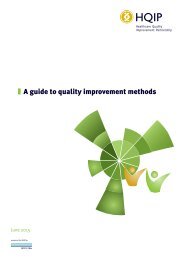2fyY1Py
2fyY1Py
2fyY1Py
You also want an ePaper? Increase the reach of your titles
YUMPU automatically turns print PDFs into web optimized ePapers that Google loves.
Children’s exposure to digital marketing of foods<br />
high in saturated fat, salt and/or free sugars and its<br />
power<br />
The WHO set of recommendations (35) notes that the effectiveness of food marketing depends on exposure (frequency<br />
and reach) and power (the nature, creative content, design and execution of the marketing message, e.g. use of persuasive<br />
techniques such as promotional characters). Currently, the evidence on digital media marketing in the public domain<br />
consists largely of analyses of the content of sites or pages created by food companies (food and beverage brand websites<br />
and social media brand pages) and occasional analyses of advertising on non-food websites popular with children. It<br />
therefore addresses the nature of digital food marketing (i.e. aspects of its power) and young people’s potential rather than<br />
actual exposure.<br />
Researchers examining food brand websites have found that child-oriented webpages frequently promote unhealthy<br />
products with dynamic, engaging, persuasive techniques. The British Heart Foundation (137) examined 100 websites for<br />
food and drink products likely to be bought or requested by children, including snacks and breakfast cereals; 80% included<br />
products that were not permitted to be advertised to children on television under United Kingdom broadcast regulations<br />
(138), which were marketed online with cartoons, animations, brand characters, competitions, games, downloadable<br />
content (e.g. mobile phone ringtones) and links to social networking site product or brand pages. In Germany, the<br />
nongovernmental organization “Foodwatch” (139) searched company and product websites and supermarkets in three<br />
German cities for items marketed to children by signatories of the voluntary EU Pledge, by which food companies agree<br />
not to market unhealthy foods to children (140). Of 22 Pledge signatories, 7 advertised unhealthy items on the Internet<br />
with child-directed content (65 of 281 items; 23%), such as games, comics, crafts and clubs; and of the 281 foods marketed<br />
to children, 90% (252) were identified as unhealthy by the WHO Regional Office for Europe nutrient profile model (141).<br />
In Ireland, the websites of the top food and drink retail brands (rather than child-directed brands or products) had little<br />
child-oriented content, but one in five had content that appealed to older children and adolescents, such as celebrity<br />
endorsement and competitions (20).<br />
These studies usefully illustrate how food brands seek to engage children, but they may not indicate children’s actual<br />
exposure to digital food marketing, as children are unlikely to spend much Internet time on food brand websites. A study in<br />
the USA of websites popular with children found that 60–84% of advertised products were HFSS foods or met the Institute<br />
of Medicine criteria for “foods to avoid” (142, 143).<br />
Studies have also been conducted of food marketing exposure and power in social media. In Ireland, researchers (20)<br />
analysed exposure by identifying the Facebook “reach” of the 113 food brands most popular in retail sales and on Facebook<br />
among users aged 13 or 14 years. All 18 brands that Facebook estimated had the greatest “reach” in this age group<br />
featured sugar-sweetened carbonated drinks, fast foods, savoury snacks, sweets, chocolate and ice-cream. Content analyses<br />
of the power of these Facebook posts found they used the tactics of engagement, emotion and entertainment, with<br />
competitions, humour, links to entertainment events, bold graphics and links to eventful “special days”; the effectiveness<br />
of such approaches is underpinned by research on Facebook brand advertising that found humorous, brand “personality”<br />
advertising to be more effective than informative content (144). Most frequent – more so even than displaying the logo,<br />
packaging or the advertised item itself – were prompts to interact with ads: hashtags and invitations to like, comment<br />
and share, indicating brands’ desire that adolescents would spread marketing through their networks (20). Similarly, an<br />
analysis of the most popular food and beverage Facebook brand pages in Australia included five that were most popular<br />
with adolescents aged 13–17 (again, featuring sugar-sweetened drinks, ice-creams, chocolate and fast food); it identified<br />
widespread marketing techniques, often unique to social media, that could increase consumer interaction and engagement<br />
and even facilitate direct product purchase (145).<br />
Consistent with this, a study of the extent of Facebook HFSS marketing seen by children in the USA who engage with<br />
brands that produce HFSS items (henceforth, “HFSS brands”) found that they were inundated with shared posts and<br />
14






